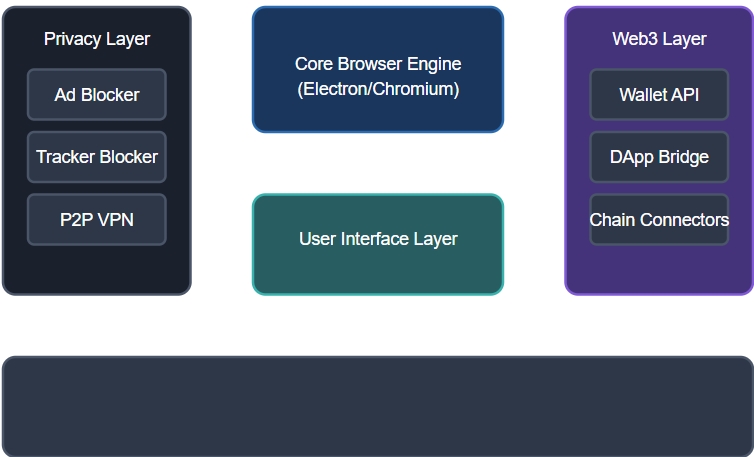Overview
Technical Architecture Overview
Macro's architecture is built in layers. Each layer reinforces privacy and security.

Architecture Principles
Privacy by architecture - Not by policy or configuration
Native integration - All features built into the browser layer
Zero trust foundation - No telemetry, no tracking, no data exhaust
Verifiable security - See your privacy working in real-time
Core Layers
Layer 1: Browser Foundation
DeGoogled Chromium base. Electron-built for cross-platform. Zero tracking from day one.
Layer 2: Identity Isolation
Privacy Profiles create hermetic seals. Separate cookie jars per profile. Isolated wallet connections. Scoped permissions.
Layer 3: Transaction Safety
Signing Sandbox intercepts all wallet interactions. Translation engine converts hex to plain English. Policy engine enforces rules. Hardware wallet integration for high-risk flows.
Layer 4: Network Privacy
Mesh P2P VPN eliminates central chokepoints. Peer-to-peer routing through distributed nodes. Real-time route health monitoring. Automatic failover.
Layer 5: Intelligent Assistance
Tab-Aware AI processes locally. Understands page context without external calls. Zero knowledge architecture. Web2 + Web3 comprehension.
Layer 6: Secure Communication
E2EE comms built natively. Encrypted calls, DMs, file sharing. No metadata leakage. Profile-integrated cryptographic identities.
Data Flow
User action → Privacy layer check → Policy enforcement → Execution
Every action passes through privacy and security checks before execution.
Security Posture
No tracking - Zero analytics, zero telemetry
Strict isolation - Profiles, dApps, and communications separated
Transaction sandbox - Prevents unauthorized wallet interactions
Zero knowledge vault - Secrets stored locally only
Component Integration
All components work as one system:
Privacy Profiles scope all other features
VPN routes traffic for all profiles
Signing Sandbox protects wallet interactions across profiles
AI respects profile boundaries
Communications use profile-specific identities
One ecosystem, not separate tools.
Last updated